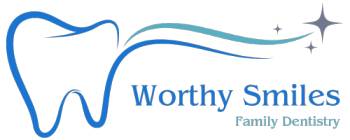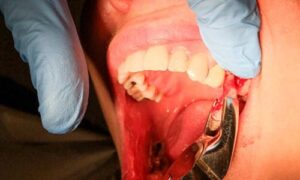Gum disease, also known as periodontal disease, is a common oral health issue that can have serious consequences if left untreated. This comprehensive guide will explore essential gum disease tips for prevention and treatment, empowering you to take proactive steps towards maintaining healthy gums and a vibrant smile.
Understanding Gum Disease Tips for Prevention
Maintain Excellent Oral Hygiene
Maintaining excellent oral hygiene is the cornerstone of preventing gum disease. In addition to regular brushing and flossing, consider incorporating an antimicrobial mouthwash into your routine to reduce bacteria and plaque further. Regular dental check-ups and professional cleanings are also crucial in preventing gum disease. Dentists can detect early signs of gum disease and provide necessary treatments to prevent it from progressing.
Adopt a Balanced Diet
A balanced diet rich in vitamins and minerals prevents gum disease. Eating various fruits and vegetables can help strengthen your immune system and promote gum health. Avoiding sugary foods and beverages can also reduce the risk of plaque buildup and tooth decay, contributing to gum disease. Additionally, staying hydrated by drinking plenty of water can help flush out harmful bacteria from your mouth and maintain saliva production, which aids in protecting your gums.
Stay Hydrated for Oral Health
Drinking adequate water helps flush away bacteria and debris, improving gum health. Furthermore, practising good oral hygiene habits, such as brushing twice daily and flossing daily, can significantly decrease the likelihood of developing gum disease. Regular dental check-ups and cleanings are also essential in detecting and treating any early signs of gum disease before it progresses.
Regular Dental Check-ups and Cleanings
Your dentist can provide professional cleanings, identify early signs of gum issues, and offer personalized advice for maintaining optimal oral health. In addition, regular dental check-ups allow for early detection of other dental problems, such as cavities or tooth decay, which can also contribute to gum disease if left untreated. Addressing these issues promptly can further reduce the risk of developing gum disease and maintain a healthy smile.
Signs and Symptoms of Gum Disease: Tips for Early Detection
Be Vigilant About Changes in Gum Health
Being vigilant about changes in your gum health is crucial for early detection. Pay attention to any signs of recession, pockets forming between teeth and gums, and changes in the colour or texture of your gums. These can be indicators of gum disease and should be addressed by a dentist as soon as possible. Additionally, if you notice persistent bad breath or taste in your mouth, it could be a sign of gum disease and should not be ignored. Regular dental check-ups can help catch these signs early and prevent further complications.
Know Your Risk Factors
Factors such as smoking, diabetes, and hormonal changes can increase your susceptibility. Discuss your risk factors with your dentist for a personalized prevention plan. Other risk factors for gum disease include poor oral hygiene, genetic predisposition, and certain medications. It is important to inform your dentist about any medications you are taking as they may contribute to your risk. By understanding and addressing these risk factors, you can take proactive steps towards preventing gum disease and maintaining good oral health.
Importance of Regular Self-Examinations
Conduct regular self-examinations of your gums at home. Use a mirror to check for any abnormalities, swelling, or discolouration. Early identification through self-examinations can prompt timely dental intervention. Regular self-examining of your gums at home is crucial for maintaining good oral health. Using a mirror to check for abnormalities, swelling, or discolouration, you can identify early signs of gum disease and seek timely dental intervention. This proactive approach can help prevent the progression of gum disease and ensure the longevity of your oral health.
Gum Disease and Systemic Health
Learn about the connection between gum disease and overall health. Research suggests a link between gum health and conditions like heart disease and diabetes. Understanding this connection emphasizes the importance of gum disease prevention. Taking care of your gums not only promotes good oral health but also has a positive impact on your overall well-being. Studies have shown that gum disease can contribute to the developing certain systemic conditions, such as cardiovascular disease and diabetes. Therefore, preventing gum disease is essential for maintaining oral and systemic health.
According to the World Health Organization (WHO), severe periodontal disease affects 10-15% of adults globally.
Gum Disease Tips for Effective Home Care
Use an Electric Toothbrush
Enhance your oral care routine by using an electric toothbrush. The oscillating or rotating movements can reach areas that manual brushing might miss, providing a more thorough clean for your gums. In addition, electric toothbrushes often have built-in timers that ensure you brush for the recommended two minutes, further promoting optimal oral health. Furthermore, some electric toothbrushes come with different brush head options, allowing you to choose one specifically designed for gum health.
Gum Massage and Gentle Brushing
Incorporate gum massage techniques into your routine to improve blood circulation and stimulate gum health. Use gentle, circular motions while brushing to avoid irritation and promote overall gum well-being. These techniques can help prevent gum disease and reduce the risk of gum recession. Additionally, using a toothbrush with soft bristles can protect your gums from any potential damage during brushing.
Importance of Proper Flossing Technique
Mastering the proper flossing technique is vital for preventing gum disease. Flossing removes plaque and debris from between teeth and along the gumline, preventing the development of pockets where bacteria can thrive. Regular flossing also helps to stimulate blood flow to the gums, promoting their health and preventing gum recession. It is important to gently glide the floss between each tooth, reaching below the gumline for a thorough clean. By incorporating proper flossing techniques into your oral hygiene routine, you can maintain healthy gums and reduce the risk of gum disease.
Consider Antiseptic Mouthwash
In addition to regular brushing and flossing, consider incorporating an antiseptic mouthwash into your routine. Antiseptic mouthwash can help kill bacteria in the mouth that brushing and flossing may have missed, further reducing the risk of gum disease. An antiseptic mouthwash can freshen your breath and leave your mouth feeling clean and refreshed. This can help reduce bacteria and plaque, contributing to a healthier oral environment.
Professional Treatment Options for Gum Disease
Scaling and Root Planing
Scaling and root planning are effective professional treatments for gum disease. This deep cleaning removes built-up plaque and tartar from the roots, promoting gum healing and preventing disease progression. In some cases, antibiotics may also be prescribed to help control bacterial infection. These treatments, combined with regular dental check-ups and good oral hygiene practices at home, can greatly improve the health of your gums and prevent further complications.
Antibacterial Therapy
Your dentist might advise antibacterial therapy, such as antibiotics or antimicrobial mouthwashes, to target and eradicate the bacteria causing gum disease. This targeted approach can be beneficial in controlling infection. Antibacterial therapy is particularly useful in cases where gum disease has advanced, and traditional treatments alone may not be sufficient. By directly targeting the bacteria responsible for the infection, these therapies can effectively reduce inflammation and promote healing of the gums. It is important to follow your dentist’s instructions and complete the course of antibiotics or mouthwashes to ensure successful treatment.
Laser Therapy for Gum Disease
Explore advanced treatment options such as laser therapy for gum disease. This minimally invasive procedure can remove infected tissue, promote healing, and stimulate the regeneration of healthy gum tissue. Laser therapy for gum disease is a promising alternative to traditional treatments, as it offers faster healing and less discomfort for patients. Additionally, this innovative procedure effectively reduces the risk of future gum infections.
Surgical Interventions for Severe Cases
Surgical interventions may be necessary in severe cases to address advanced gum disease. Procedures like gum grafting or flap surgery can help restore and reshape gum tissue for improved oral health. These surgical interventions involve removing infected tissue and replacing it with healthy tissue from another part of the mouth or using synthetic materials. These procedures can effectively prevent further damage to the gums and teeth and improve oral health.
Older adults are more susceptible to gum disease. In the United States, the Centers for Disease Control and Prevention (CDC) reported that over 70% of adults 65 years and older have periodontal disease.
Conclusion: Empower Yourself with Gum Disease Treatment Tips
In conclusion, adopting a comprehensive approach to gum disease prevention and treatment involves a combination of lifestyle choices, effective home care, and professional interventions. By incorporating these tips into your daily routine and staying proactive about your gum health, you can take control of your oral well-being and enjoy a confident, healthy smile. Early prevention and timely treatment are key to successful gum disease management.
FAQs related to gum disease tips
Q1: What is gum disease, and what causes it?
A1: Gum disease, or periodontal disease, is an infection of the gums and tissues supporting the teeth. It is mainly caused by the accumulation of plaque, a sticky film of bacteria that forms on teeth. Poor oral hygiene, smoking, certain medical conditions, and genetic factors can contribute to the development of gum disease.
Q2: How can I prevent gum disease at home?
A2: Preventing gum disease at home involves maintaining excellent oral hygiene practices. This includes brushing your teeth at least twice daily, flossing daily, using an antiseptic mouthwash, and adopting a balanced diet rich in vitamins and minerals. Regular dental check-ups are also crucial for professional cleanings and early detection.
Q3: What are the early signs of gum disease?
A3: Early signs of gum disease include red or swollen gums, bleeding during brushing or flossing, persistent bad breath, and gum recession. If you notice any of these symptoms, seeking prompt dental attention for an accurate diagnosis and appropriate treatment is essential.
Q4: How often should I visit the dentist for a check-up to prevent gum disease?
A4: For most individuals, biannual dental check-ups are recommended for preventive care. However, the frequency may vary based on individual oral health needs. Consult with your dentist to determine the optimal schedule for your regular check-ups.
Q5: Are there any lifestyle factors that contribute to gum disease?
A5: Yes, certain lifestyle factors can contribute to gum disease. Smoking, poor nutrition, stress, and conditions like diabetes can increase the risk of developing gum disease. Adopting a healthy lifestyle and addressing these factors can positively impact gum health.














